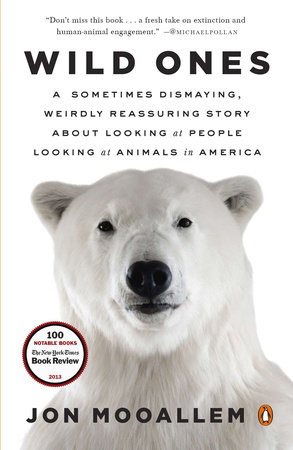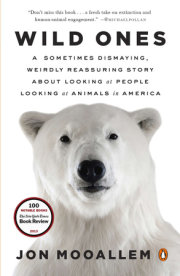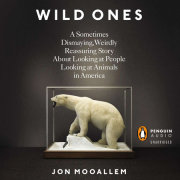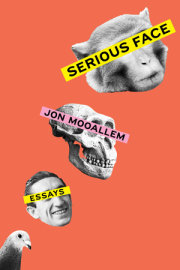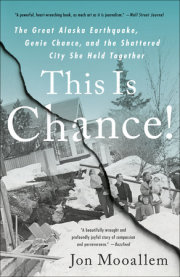During the Cold War, a joint U.S.-Canadian military installation was built outside the tiny northern town of Churchill, Manitoba, at the western edge of Hudson Bay. Those stationed at Fort Churchill had several jobs to do, like be ready to repulse the Soviets if they invaded over the North Pole and figure out how to lob nuclear warheads at Moscow through the Aurora Borealis, which was proving, mysteriously, to muck up the guidance systems on their rockets. A lot of the soldiers’ time was also spent dealing with a nuisance: hundreds of polar bears that ambled across the tundra there every fall.
In November 1958, for example, one ate a pair of boots at the firing range. Another smashed a building’s window, poked his head in, and had to be blasted with a fire extinguisher. At least twenty polar bears were loitering near the mess hall and the dump, and, late one Sunday night, three turned up at the central commissary. Soldiers in station wagons drove them back into the wilderness. One report noted, “The most effective, anti-dawdling weapon has been the small helicopter.” Even so, occasionally the bears would rear up on their hind legs and try to tussle with the armored flying machines. One helicopter pilot described how unsettling it was to make a low pass and find “some six feet of indignant polar bear throwing haymakers” with paws the size of dinner plates. After a while, military contractors limited the amount of work done outside at night; the higher-ups decided it would just be easier to stay out of the polar bears’ way. “So this is civilization,” began one newspaper article about military wives at Fort Churchill.
By the time I arrived, one November a half-century later, the military was gone. The fort had been dismantled and carted off, though two massive, ruined radar domes still sat in the distance like some post-apocalyptic Epcot attraction. A dozen specially built vehicles called Tundra Buggies crawled along the network of dirt roads the military had built and abandoned. Each was stuffed with tourists, many of whom had paid several thousand dollars a head to fly to Churchill, now billing itself as “The Polar Bear Capital of the World.” They were mostly older vacationers, taken out to the tundra every day to get a glimpse of the animals, then deposited back in town to prowl the gift shops along Churchill’s main road, buying polar bear caps and snow hats, polar bear T-shirts, polar bear aprons, polar bear Christmas ornaments, polar bear magnets, polar bear boxer shorts, polar bear light-switch plates, polar bear wind chimes, polar bear baby bibs, and pajamas that say “Bearly Awake.”
A Tundra Buggy, if it resembles anything at all, resembles a double-wide school bus propped up on monster-truck tires. Three had pulled off the road to watch a lone polar bear splayed flat at the rim of a frozen pond, asleep in the willows. I was behind them in a scaled-down vehicle known as Buggy One, one of the storied, original rigs of the fleet. Buggy One is now operated by a conservation group, Polar Bears International. One of the group’s videographers was shooting footage of the bear through an open window while the other staff on board tried to sit perfectly still so as not to rattle his tripod. The cameraman had been filming the bear for a long time, in Super HD, hoping it would stand up or do something alluring. Up ahead, tourists filed onto the rear decks of their buggies, training their Telephoto lenses and little point-and-shoots at the animal. It lifted its head once or twice, but that was it. After a couple of minutes, I noticed that the tourists had turned ninety degrees and were photographing us, aboard Buggy One, instead.
It was then that Martha Stewart’s helicopter came into view. Everyone turned to watch it as it passed, flying low and very far ahead. Two hundred years ago, Arctic explorers described polar bears leaping out of the water and into boats, trying to “resolutely seize and devour” whichever dog or human being was sitting closest to their jaws, unprovoked and absolutely undeterred even if you tried to set the bear on fire. Now Martha Stewart had come to Churchill to shoot a special segment about the bears for her daytime television show on the Hallmark Channel.
Polar Bears International had been working in a loose partnership with Martha Stewart for many months in advance to handle logistics for her shoot. The group was trying to ensure that Martha told the right story about the animals. It isn’t enough anymore to gush about how magnificent or cute polar bears are, as the many travel writers and television personalities that came to Churchill over the years had tended to. The stakes were too high now—too urgent. Climate change had put the bear in severe jeopardy. According to a 2007 study by U.S. government scientists, two-thirds of the world’s polar bears are likely to be gone by the middle of this century. And, of course, that’s only one of many dispiriting prognoses trickling into the news these days. Another study predicts that climate change may wipe out one of every ten plant and animal species on the planet during that same time. Another claims seven of every ten could be gone. Tropical birds, butterflies, flying squirrels, coral reefs, koalas—the new reality will rip away at all of them, and more. The projections range from bona fide tragedies to more niggling but genuinely disruptive bummers: tens of millions of people in Bangladesh are likely to be displaced by sea-level rise and flooding; the Forest Service warns of maple syrup shortages in America.
The polar bear, in other words, is an early indicator of all this other turmoil coming our way. It is, as everyone on Buggy One kept telling me, a “canary in the coal mine”—that was the phrase they used, always, with unrelenting discipline. The animal had become a symbol for some otherwise inexpressible pang—of guilt, of panic—that can burble into the back of your mind, or the pit of your stomach, when you think about the future of life on Earth. But, Polar Bears International was arguing, it could also be a mascot—a rallying point. By now, bears are all but guaranteed to disappear from a lot of their range. But the science suggests that there’s still time to slow climate change down and, in the long term, keep the species—and many others along with it—from vanishing entirely.
Practically speaking, this leaves conservationists like Polar Bears International in a unique and sometimes disorienting position. Unlike with other species, the central threat to polar bears isn’t something that can be tackled or solved on the ground, out in the immediate ecosystem. The only meaningful way to save the polar bear now is to influence the energy policies and behavior of people who live thousands of miles away—which means, in part, influencing influential media personalities like Martha Stewart. At some point, polar bear conservation stopped being solely the work of scientists and became the work of lawyers, lobbyists, and celebrities as well. The bear is dependent on the stories we tell about it.
After spending the fall in Churchill, Polar Bears International’s president, Robert Buchanan, would head back home to the United States and start traveling from city to city, hosting talks by scientists and zookeepers, trying to use the appeal of this one charismatic animal to inspire people to reduce their own carbon footprints, however slightly—to drive less, to buy recycled goods. In Kansas City, PBI had partnered with the hardware chain Lowe’s to get inner-city kids to weatherize their neighbors’ homes, saving energy for heating and cooling. In suburban Connecticut, they’d cosponsored “Polar Bear Empathy Day,” at which members of the local Polar Bear Club, in a reversal of their traditional cold-water swims, put on heavy parkas and stood on a scorching beach in July to show solidarity with the bears in an overheating Arctic. All together, Robert regarded these strategies and stunts as a kind of psychological guerrilla warfare. “Polar bears are in serious friggin’ trouble,” he told me that morning on Buggy One. “But until you change the consumer’s attitude, you’re not going to change the policy or the political will.” By “consumer,” he presumably meant “citizen.”
It was a marketing gambit, after all. And Robert, a big man who talks in a languorous growl, felt very comfortable relating to it in those terms. This was his retirement. In his thirty-five-year career, he’d risen to marketing director at Joseph E. Seagram & Sons, overseeing beverage and alcohol brands during the heyday of the corporation, when it owned Universal Studios and a large share of the music industry and was producing flashy wine-cooler commercials starring a young Bruce Willis. Robert handled cognacs and whiskey and Tropicana orange juice. “I take products to market,” he said. “I’m a marketer.” Now he’d put himself on the polar bear account.
Robert was literally trying to control the image of the polar bear in Churchill before that image was broadcast around the world. Churchill turns out to be the best, most convenient place in the world to see or film polar bears in the wild. (When you see a wild polar bear on TV or the Internet, the chances are good that you’re looking at a Churchill bear.) Because Polar Bears International operates in close partnership with a tour company in Churchill that owns the majority of the permits and vehicles needed to access the animals on the tundra, the group has been able to intercept most of the major media that come through town. They install biologists and climatologists on the reporters’ buggies like scientific press agents, trying to make sure an accurate narrative comes across, and they provide B-roll footage of bears plunging into melting slush to help newscasters illustrate the problem. In past years, though, PBI had gone out of its way to help television crews only to feel betrayed by the finished product: the reporters ignore climate change altogether, or regurgitate the junk theories of climate change deniers. Most television crews are now asked to sign memorandums of understanding, outlining certain guidelines, before working with PBI. (As a rule, one PBI staffer told me, Robert regards all journalists as “pirates and thieves.”) But that fall, Martha Stewart hadn’t signed one. And in the days before her arrival, her producers had become a little incommunicative about their plans. We’d all headed out on Buggy One that morning because PBI had hoped to tour the tundra alongside Martha and her crew, docking back-to-back with Martha’s buggy to pass people back and forth periodically for interviews. But that was starting to feel unlikely now. Though no one was quite saying it, there seemed to be concern that Martha Stewart was going rogue.
Everyone on Buggy One sat around for quite a while, not speaking much, while the cameraman stayed locked optimistically on the bear lumped in the mud outside, trying to gather whatever stock footage he could. Eventually, the polar bear got up and walked away. The cameraman shrugged.
We drove on. We looked for more bears. People noodled on their laptops and iPads. It felt aimless. Then, sometime after lunch, a voice crackled over the radio. It sounded like we would finally rendezvous with the Martha Stewart people and do a little filming on Buggy One. A PBI employee started wiping down the vehicle’s counters with wet wipes. She hung everyone’s parkas on coat hooks in the back. But when we got closer, we saw Martha’s buggy receding in our windshield, fairly rapidly. “Oh, they’re moving now,” our driver groaned.
All day, a strange paparazzi-like triangle had been materializing: Martha wanted good access to polar bears, and PBI wanted good access to Martha. I wanted to watch the whole process of brokering access, since I was quickly understanding that the media relations dimension of polar bear conservation was a critical part—maybe the most critical part—of the preservation of this five-million-year-old species.
Our driver pushed Buggy One as fast as it would go, which wasn’t very fast, trying to gain ground. Something that I’d kind of suspected for hours was suddenly obvious: we were chasing Martha Stewart across the tundra.
Copyright © 2013 by Jon Mooallem. All rights reserved. No part of this excerpt may be reproduced or reprinted without permission in writing from the publisher.

